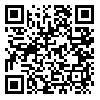Volume 19, Issue 1 (2019)
MCEJ 2019, 19(1): 105-116 |
Back to browse issues page
Download citation:
BibTeX | RIS | EndNote | Medlars | ProCite | Reference Manager | RefWorks
Send citation to:



BibTeX | RIS | EndNote | Medlars | ProCite | Reference Manager | RefWorks
Send citation to:
shirgir B, hassanpour H. Analysis of Traffic Factors Affecting the Accidents in the Urban Tunnel Entry Areas (Case Study: Resalat Tunnel). MCEJ 2019; 19 (1) :105-116
URL: http://mcej.modares.ac.ir/article-16-16054-en.html
URL: http://mcej.modares.ac.ir/article-16-16054-en.html
1- , shirgir@gmail.com
2- Department of Civil Engineering, kharazmi University, Alborz, Iran
2- Department of Civil Engineering, kharazmi University, Alborz, Iran
Abstract: (6708 Views)
Urban tunnels are one of the major infrastructures in transportation networks of metropolitan cities. Owing to the enclosed space of tunnels, the safety of through passage is essential. Identify factors affecting the frequency of accidents in urban tunnels can be useful in preventing and reducing related casualties. In this research, we try to determine the factors affecting a number of accidents by comparing the generalized linear model and the generalized additive model. The data of Resalat tunnel comes from Tehran's urban tunnels control and management centre, which includes the daily volume variables, the percentage of heavy vehicles, the difference between the average speed of passing vehicles from the tunnel and the speed limit of the highway as independent variables, and the number of accidents per day during the period 2010 to 2012 as dependent variable. In this research, R software programs are used respectively for fitting a generalized linear and generalized additive model. Based on the results of generalized linear and generalized additive models, the percentage of heavy vehicles and the difference between the average speed of passing vehicles from the tunnel and the speed limit of the highway are significantly and positively related to the frequency of accidents in the access and entrance areas of the tunnel. The logarithm of daily traffic volume is not meaningful in the generalized additive model, in contrast to the generalized linear model. Therefore, identifying the factors affecting the frequency of accidents in urban tunnels by using advanced statistical models will greatly help to develop effective measures in improving the safety of tunnels. Urban tunnels are one of the major infrastructures in transportation networks of metropolitan cities. Owing to the enclosed space of tunnels, the safety of through passage is essential. Identify factors affecting the frequency of accidents in urban tunnels can be useful in preventing and reducing related casualties. In this research, we try to determine the factors affecting a number of accidents by comparing the generalized linear model and the generalized additive model. The data of Resalat tunnel comes from Tehran's urban tunnels control and management centre, which includes the daily volume variables, the percentage of heavy vehicles, the difference between the average speed of passing vehicles from the tunnel and the speed limit of the highway as independent variables, and the number of accidents per day during the period 2010 to 2012 as dependent variable. In this research, R software programs are used respectively for fitting a generalized linear and generalized additive model. Based on the results of generalized linear and generalized additive models, the percentage of heavy vehicles and the difference between the average speed of passing vehicles from the tunnel and the speed limit of the highway are significantly and positively related to the frequency of accidents in the access and entrance areas of the tunnel. The logarithm of daily traffic volume is not meaningful in the generalized additive model, in contrast to the generalized linear model. Therefore, identifying the factors affecting the frequency of accidents in urban tunnels by using advanced statistical models will greatly help to develop effective measures in improving the safety of tunnels.
Article Type: Original Manuscript |
Subject:
Earthquake
Received: 2018/01/26 | Accepted: 2019/05/22 | Published: 2019/05/15
Received: 2018/01/26 | Accepted: 2019/05/22 | Published: 2019/05/15
Send email to the article author
| Rights and permissions | |
 |
This work is licensed under a Creative Commons Attribution-NonCommercial 4.0 International License. |







